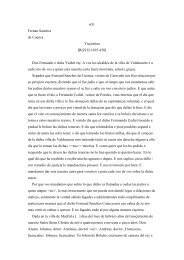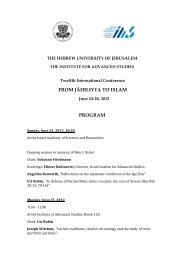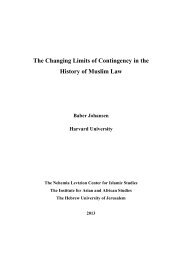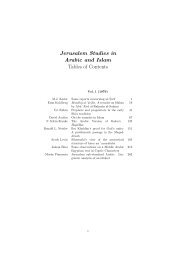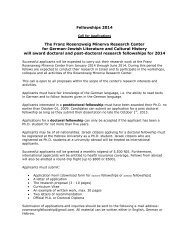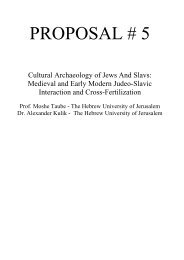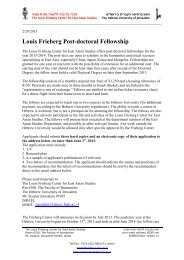Proverbs 7 in MT and LXX: Form and Content
Proverbs 7 in MT and LXX: Form and Content
Proverbs 7 in MT and LXX: Form and Content
Create successful ePaper yourself
Turn your PDF publications into a flip-book with our unique Google optimized e-Paper software.
150<br />
Tova Forti <strong>and</strong> Zipora Talshir<br />
describe the lad as talk<strong>in</strong>g at this po<strong>in</strong>t, unless he meant to create a<br />
contradiction between the talkative lad <strong>and</strong> the quiet of the night. This<br />
would mean that it is the translator’s choice, s<strong>in</strong>ce it is his<br />
misunderst<strong>and</strong><strong>in</strong>g of that <strong>in</strong>troduced the stillness of the night <strong>in</strong>to the<br />
scene. It would have been best to expla<strong>in</strong> the awkward as an<br />
<strong>in</strong>ternal-Greek corruption, but the suggestions offered are rather<br />
unconv<strong>in</strong>c<strong>in</strong>g. 47<br />
Verses 10–20: The Seductive Woman<br />
In the <strong>MT</strong>, a woman suddenly appears on the scene:<br />
. She<br />
is an <strong>in</strong>carnation of the type-woman mentioned <strong>in</strong> v. 5—an . Vv. 10–<br />
13 offer a general characterization, at the end of which she is described as<br />
boldly seiz<strong>in</strong>g the lad <strong>and</strong> address<strong>in</strong>g him with her words (v. 13), which are<br />
cited <strong>in</strong> great detail (vv. 14–20). She engulfs him with her conv<strong>in</strong>c<strong>in</strong>g<br />
arguments <strong>and</strong> seductive promises. As envisaged <strong>in</strong> the <strong>in</strong>troduction: <br />
( (v. 5), <strong>and</strong> summed up <strong>in</strong> the conclusion: ( % ( (v. 21),<br />
the danger lies <strong>in</strong> her smooth talk. In the <strong>LXX</strong> the woman’s dramatic<br />
appearance fades away, s<strong>in</strong>ce she never left the scene after her first<br />
appearance <strong>in</strong> v. 5. This sums up the difference between the texts. As for the<br />
nature of this woman, the Greek text gives no reason to believe that the<br />
translator had <strong>in</strong> m<strong>in</strong>d anyth<strong>in</strong>g but the woman as described <strong>in</strong> the <strong>MT</strong>.<br />
This part, like the preced<strong>in</strong>g one, is constructed of short parallel stichs, but<br />
the synonymous character of the parallelism disappears entirely. The<br />
second stich rarely repeats elements from the first, but rather goes on<br />
build<strong>in</strong>g the scene with fresh details. The translator is more at home with<br />
this style, but his writ<strong>in</strong>g reads much more like a narrative compared with<br />
the <strong>MT</strong>, los<strong>in</strong>g the cumulative rhythm <strong>and</strong> tension created by the successive<br />
short stichs.<br />
47 Lagarde, Anmerkungen, ‘be soft <strong>and</strong> delicate’, <strong>and</strong> Jäger, Observationes,<br />
& ‘be at a loss’, or ‘to tread’.





